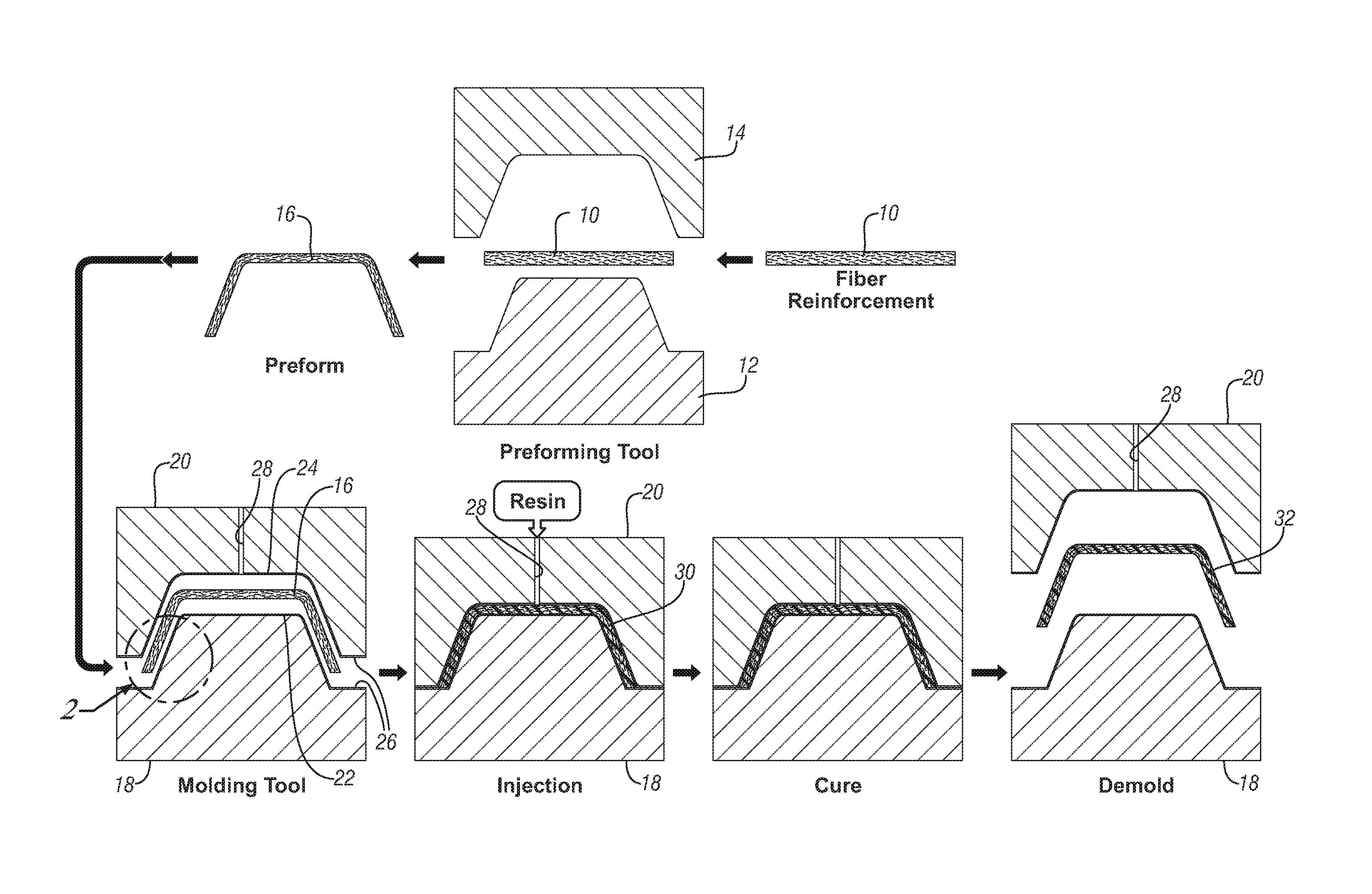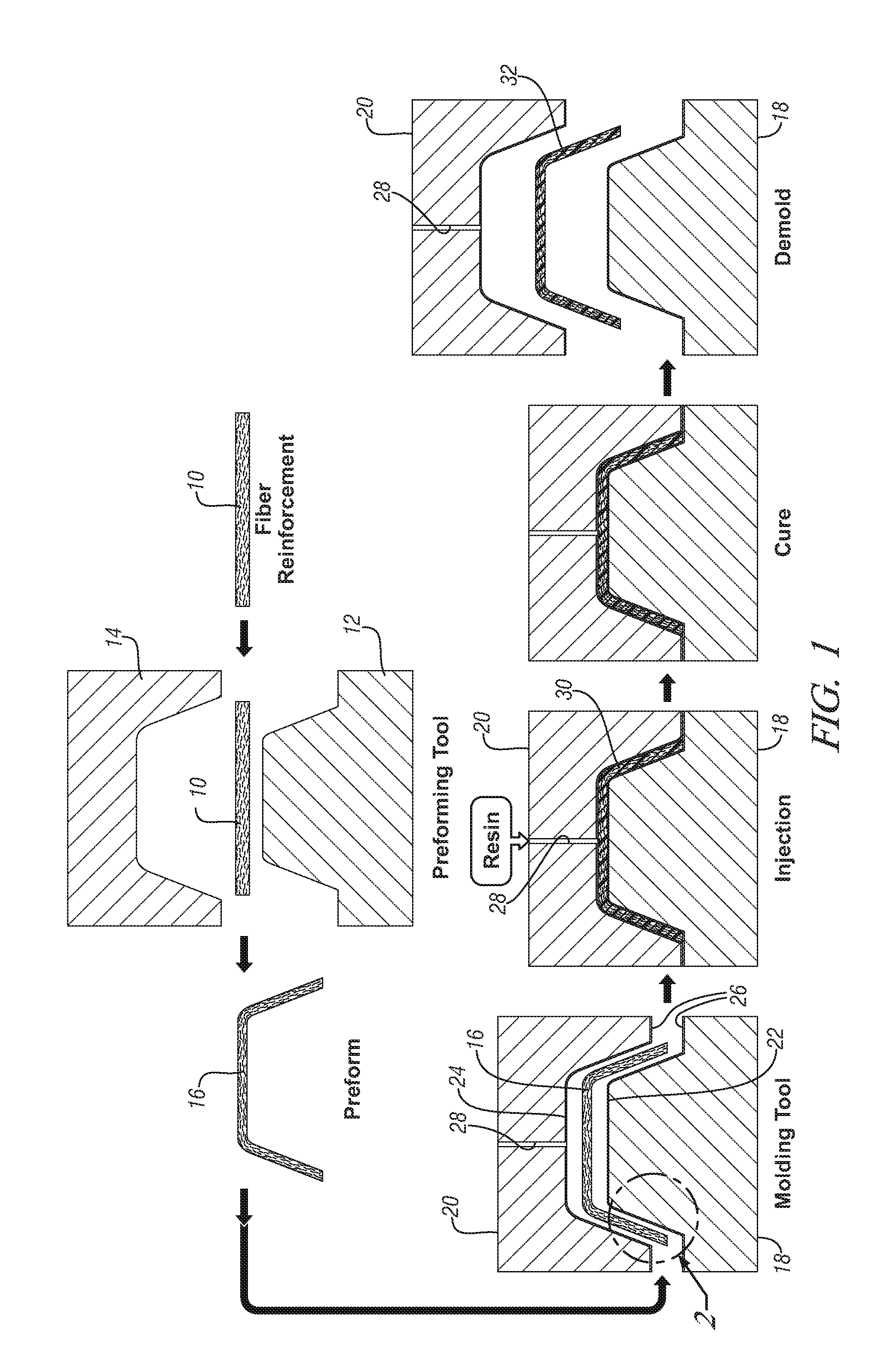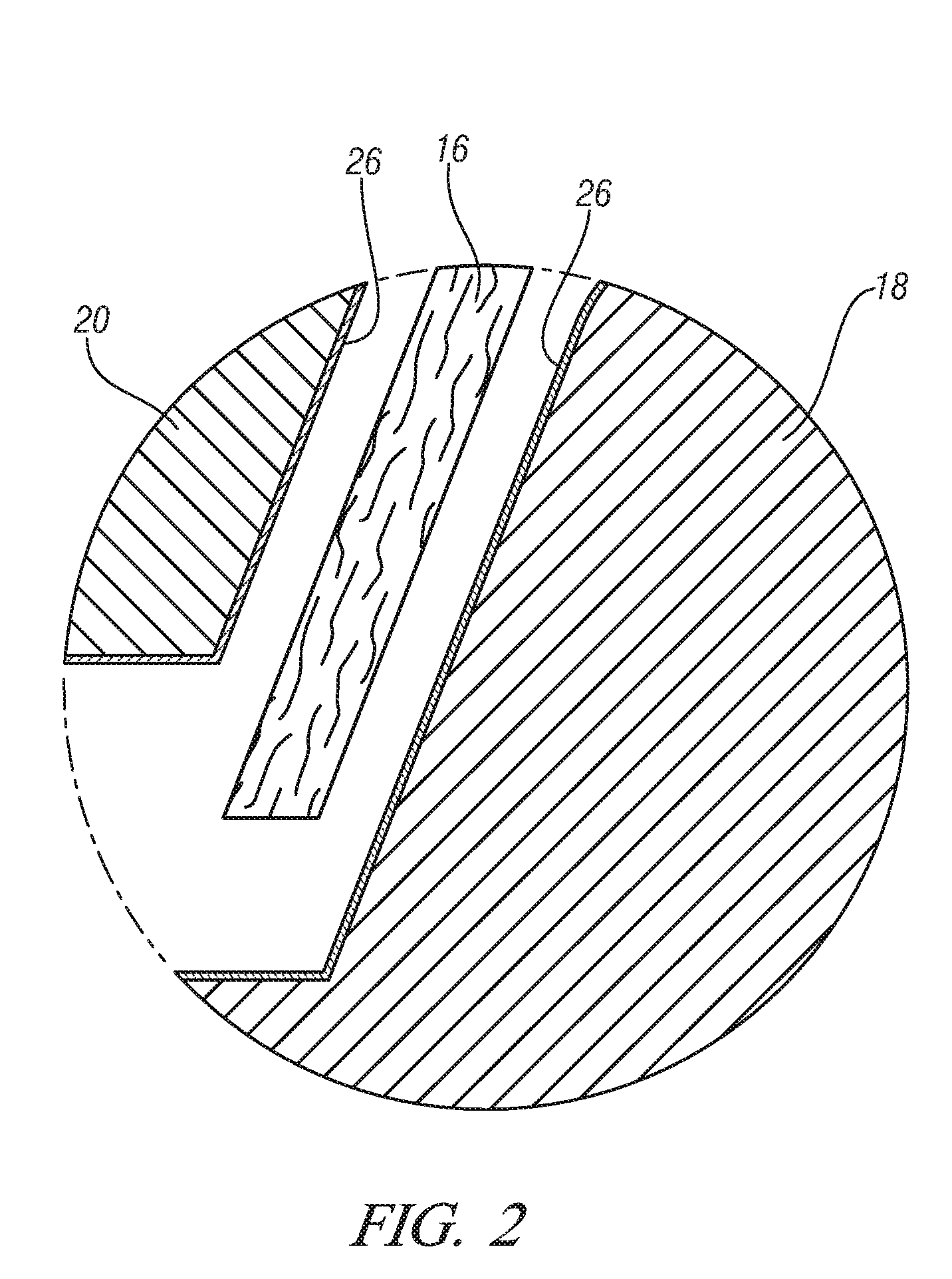Durable tool for molding of polymer composites
- Summary
- Abstract
- Description
- Claims
- Application Information
AI Technical Summary
Benefits of technology
Problems solved by technology
Method used
Image
Examples
example 1
Autoclave Cured, Hand Lay-Up, Carbon Fiber Composite Laminate Molding
[0031]This process is currently being used to make automotive vehicle body panels in very low volume. Substantially unidirectional carbon cloths sheets (about 0.2 mm thick) impregnated with a liquid epoxy resin precursor composition (40% by weight of the composite) are cut into predetermined patterns. The sheets are laid-up as plies on the cavity surface of a single Invar-36 tool. For example, six plies are laid-up to a total thickness of about 1.2 mm, with successive layers of carbon fibers oriented in different directions to obtain suitably isotropic properties in a molded panel. The laid-up sheet body is covered with a plastic film and sealed around its perimeter for removal of air by vacuum. The entire assembly is loaded into an autoclave for compression against the tool surface and heating to cure the epoxy resin matrix. The tool and cured composite material are removed from the autoclave and cooled, and the f...
example 2
Liquid Molding Process—Resin Transfer Molding (RTM) and Reaction Injection Molding (RIM)
[0034]Liquid molding is capable of producing carbon fiber composites up to 100,000 parts per year per tool, depending on the resin chemistry used in the process. There are various forms of liquid molding process and the most widely used are RTM and RIM. The process is illustrated with reference to the schematic flow diagram of FIG. 1.
[0035]Referring to FIG. 1, a sheet-like or slab-like multi-layer body 10 (also identified as Fiber Reinforcement in FIG. 1) of carbon fiber cloth is placed between opposing and complementary preforming tools consisting of a lower (as illustrated in the drawing figure) male preforming tool 12 and an upper female preforming tool 14. The set of tools 12, 14 is also identified as Preforming Tool in the drawing figure. At the stage of illustration in FIG. 1, the tools 12 and 14 are vertically separated in their open position and the body 10 of carbon fiber cloth may be la...
example 3
[0041]Compression molding is the most traditional process to produce both thermosetting and thermoplastic composite parts. Ni plated Invar tools can be used to mold carbon fiber composite parts for certain applications such as automotive inner parts. The materials suitable for this type of molding are carbon fiber epoxy prepregs (same as the materials used for autoclave molding), carbon fiber sheet molding compound, SMC (chopped carbon fibers in vinyl ester resin, for example), and various carbon fiber containing thermoplastic polymers such as polypropylene, polyamide, etc. The layers or bodies of prepreg material or SMC are loaded into the cavity of the opened, opposing complementary molding tools. The tools are closed to compress the uncured resin impregnated carbon fiber body in the cavity formed between them. Again, the tools are heated to cure the matrix resin material and then opened for removal of the hot molded part. For thermoplastic molding, the tools ar...
PUM
| Property | Measurement | Unit |
|---|---|---|
| Fraction | aaaaa | aaaaa |
| Fraction | aaaaa | aaaaa |
| Thickness | aaaaa | aaaaa |
Abstract
Description
Claims
Application Information
 Login to View More
Login to View More - R&D
- Intellectual Property
- Life Sciences
- Materials
- Tech Scout
- Unparalleled Data Quality
- Higher Quality Content
- 60% Fewer Hallucinations
Browse by: Latest US Patents, China's latest patents, Technical Efficacy Thesaurus, Application Domain, Technology Topic, Popular Technical Reports.
© 2025 PatSnap. All rights reserved.Legal|Privacy policy|Modern Slavery Act Transparency Statement|Sitemap|About US| Contact US: help@patsnap.com



